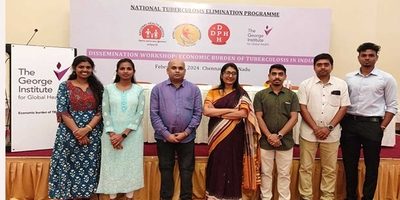
Findings from the George Institute could help reduce rates of tuberculosis worldwide
New evidence from The George Institute for Global Health could help reduce rates of tuberculosis in Vietnam, and potentially worldwide.
Researchers from The George Institute analysed the costs of a new intervention in Vietnam, which doubled diagnosis rates, and found it was cost-effective, could be scaled up and should be considered for wider implementation.
Every year more than 10 million people fall ill from tuberculous (TB) worldwide with 1.7 million losing their lives.
Dr Thomas Lung, who led the economic evaluation at The George Institute, said the findings published in The Lancet Global Health could help prevent the transmission of TB and save lives in Vietnam each year.
“Tuberculosis is the leading cause of death by infection in the world with rates highest in Asia. In order to tackle tuberculosis we need strategies that not only work, but are also cost-effective.
“It’s really imperative that health economic evaluations such as these are done so governments have a clear picture of the costs involved in scaling up a trial across a community or country.”
The trial examined the cost-effectiveness of a trial led by the Woolcock Institute of Medical Research in Sydney, which found testing relatives of people with TB led to a doubling of diagnosis rates.
The randomised controlled trial found household screening for TB resulted in 2.5 times as many people receiving life-saving treatments.
Researchers from The George Institute conducted an economic evaluation of the large cluster randomised trial of 25,707 household contact in 70 districts of Vietnam. The trial increased the number of registered TB contacts by 1084 per 100,000 people, and on average cost $98.16 per person over a 24 month period. The estimated incremental cost-effectiveness ratio was $544 per disability adjusted life year averted.
Dr Lung said: “People with tuberculosis are typically only treated when they present to a health facility with symptoms. What this trial did was a new approach by actively seeking out family members of individuals who had been diagnosed with TB, as they were at highest risk of infection.
“We demonstrated that this very active approach to treating tuberculous not only led to more people being diagnosed early, but was also very cost-effective.”




